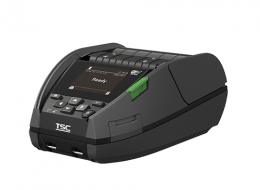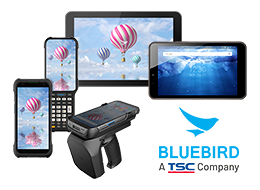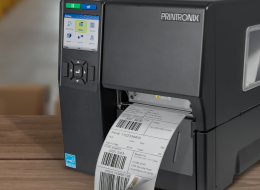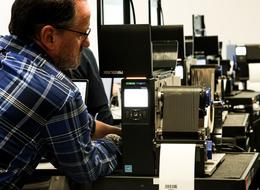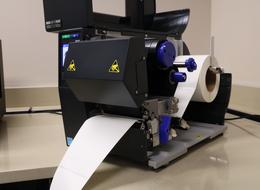RFID Tips to Support In-Store E-Commerce Operations

Items with RFID labels are now arriving at your brick-and-mortar stores. Hopefully, you view this as great news. What do you need to keep in mind to take advantage of these newly tagged items?
You will quickly learn that suppliers who deliver properly encoded and tagged items should be prioritized. Ask these questions to assess tagged items:
- Are the tags applied to the items in locations for ease of reading?
- Are the tags readable from an acceptable distance?
- Are the tags properly encoded as per GS1’s SGTIN-96 encoding scheme?
Smaller retailers may not have sufficient clout with their suppliers to dictate inlay options, tag placement, and proper encodings. Still, suppliers must fulfill these requirements for large retailers like Walmart, Dick’s Sporting Goods, and others. This means smaller retailers can leverage the work done by the major retailers (usually in collaboration with Auburn University’s RFID Lab) to prioritize suppliers that deliver properly tagged items.
Next, you will learn that some of the items you receive need to be tagged. The RFID label may have fallen off somewhere along the supply chain. Or the supplier still needs to implement RFID labeling. You will want to get these items tagged as quickly as possible to reap the benefits of your RFID implementation. Tagging these items is called “exception tagging.” The item should have a tag but it does not, so now you need to tag it.
Exception tagging should be handled on-premise in order to minimize disruptions. Retailers will need an RFID-enabled printer, appropriate labels, and software to generate print jobs with correct data. Mobile printers are typically used for exception tagging but keep in mind that mobile RFID printers only work in “direct thermal” mode (no ink ribbon). If the label being generated only needs to last a few months, then direct thermal is usually fine. However, if the item might sit on your shelf for longer, then you will need to use a tabletop RFID printer that works in “thermal transfer” mode (using an ink ribbon).
You will also need labels. There are hundreds of RFID inlay options and an infinite variety of label dimensions, so how do you determine which labels to use for exception tagging? You can have print stations by store department if you are a major retailer. Each department, in turn, typically works with limited inlay and label options, so the retailer can select an inlay and label dimensions that work for as many products in that department as possible.
For smaller retailers, a single print station may be used to cover multiple product types and departments in your store—or everything in your store. This makes selecting your inlay and label dimensions more difficult. Try to select a “general purpose” inlay that has been specified by Auburn’s ARC program to work across as many applicable product types as possible.
The software needed to print and encode exception tags is generally not complex, but there is one key caveat to remember: each serial number you generate must be unique. GS1 has developed a good guideline that can help you with serial number management.
In addition to accurate inventory counts, another major in-store benefit of RFID you will want to leverage is “locationing.” Finding an item using RFID is a very complex science, but retailers currently use handheld readers that support “Geiger counter” mode. The reader signals either visually, audibly, or both, that you are getting closer or farther from your target item. Items can usually be located quickly with this approach.
Many advocates of RFID support the concept of a comprehensive, fixed-reader infrastructure that can automatically provide relatively accurate locationing through techniques such as triangulation, angle of arrival, and signal timing. Such fixed-reader infrastructure is not yet common, but it is worth considering if your budget allows it.
Finally, when selecting readers, ensure that they properly read tags, including the so-called Protocol Control (PC) Word. If your vendor does not understand this concept, it’s time to find another vendor. Correctly reading your tags, including the PC Word, greatly facilitates filtering for tags of interest and helps eliminate erroneous reads.
RFID for E-Commerce: Webinar and Blog Series
TSC Printronix Auto ID will be hosting a global RFID for E-Commerce Webinar to reveal more insights. We will also continue to highlight the challenges and benefits for retailers and suppliers in our RFID for E-commerce blog series. To stay in the know, be sure to follow us on LinkedIn or Facebook to get the latest updates.

